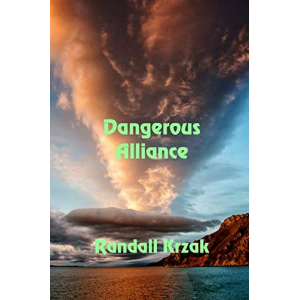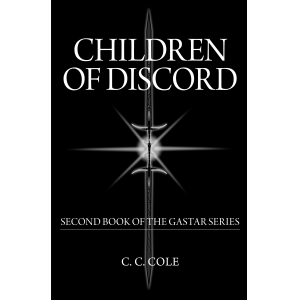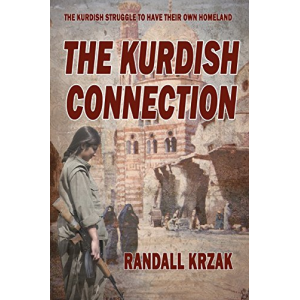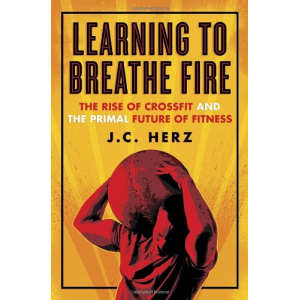The New York Times Book Review
🔗 http://www.mattbeynonrees.com/reviews_nablus.htm- Author
- Book
- Story behind the book
- Media Links
- Reviews

Matt Rees
About
I’man award-winning British crime novelist. Major authors have compared my writingwith the work of Graham Greene, John Le Carre, Georges Simenon and HenningMankell. The French magazine L’Express called me “the Dashiell Hammett of Palestine.”
WHERE:I live in Jerusalem. I came here in 1996. For love. Then wedivorced. But the place took hold. Not for the violence and the excitement thatsometimes surrounds it, but because I saw people in extreme situations. Throughthe emotions they experienced, I came to understand myself.
BEFORETHE WRITING: There was never really a time before I wrote. I’ve been at itsince I was seven (a poem about a tree, on the classroom wall with a gold starbeside it.) But I arrived in the Middle East as a journalist with only acouple of published short stories to my name. First I wrote for The Scotsman,then Newsweek, and from 2000 until 2006 as Time Magazine’s Jerusalem bureau chief. I won someawards for covering the intifada. Yasser Arafat once tried to have me arrested,but I eluded him and decided to focus on fiction. I’d learned so much about thePalestinians – and about life – that didn’t fit into the limited world ofjournalism. So I wrote my Palestinian crime novels.
BEFOREJERUSALEM: I was born in Newport, Wales, in 1967. That’s mymother’s hometown; my father’s from Maesteg in the Llynfi valley. We movedaround, to Cardiff and Croydon, then I studiedEnglish at WadhamCollege, OxfordUniversity with Terry Eagleton as mytutor. Contemporaries may remember me as the fellow with bleached blonde hairat the bar of the King’s Arms in the company of the Irish porters from AllSoulsCollege. I did an MA at theUniversity of Maryland and lived in New York for five years before I hit theMiddle East.
WHERETHE BOOKS CAME FROM: I wrote a nonfiction account of Israeli and Palestiniansociety called Cain's Field: Faith, Fratricide, and Fear in the Middle East in 2004 (Free Press). I’mproud of it, because it really gets to the heart of the conflict here – itisn’t one of those notebook-dump foreign correspondent books.
I was looking for my next project and cameup with the idea for Omar Yussef, my Palestinian sleuth, while chatting with mywife in our favorite hotel, the Ponte Sisto in the Campo de’Fiori in Rome. I realized I had becomefriends with many colorful Palestinians who’d given me insights into the darkside of their society. Like the former Mister Palestine (he dead-lifts 900 pounds),a one-time bodyguard to Yasser Arafat (skilled in torture), and a delightfulfellow who was a hitman for Arafat during the 1980s. To tell the true-lifestories I’d amassed over a decade, I decided to channel the reporting into a crimeseries. After all, Palestine’s reality is no romancenovel.
THENOVELS: The first novel, The Collaborator of Bethlehem (UK title The BethlehemMurders), was published in February 2007 by Soho Press. In the UK it won the prestigiousCrime Writers Association John Creasey Dagger in 2008, and was nominated in theUS for the Barry First NovelAward, the Macavity First Mystery Award, and the Quill Best Mystery Award. In France it’s been shortlisted forthe Prix des Lecteurs. New York Times reviewer Marilyn Stasio called it “anastonishing first novel.” It was named one of the Top 10 Mysteries of the Yearby Booklist and, in the UK Sir David Hare made it hisBook of the Year in The Guardian.
Colin Dexter, author of the Inspector Morse novels,called Omar Yussef “a splendid creation.” Omar was called “Philip Marlowe fedon hummus” by one reviewer and “Yasser Arafat meets Miss Marple” by another.
The second book in the series, A Gravein Gaza, appeared in February 2008 (and at the same time under the title TheSaladin Murders in the UK). The Bookseller calls it“a cracking, atmospheric read.” I put in elements of the plot relating toBritish military cemeteries in Gaza in homage to my two greatuncles, who rode through there with the Imperial Camel Corps in 1917. One ofthem, Uncle Dai Beynon, was still around when I was a boy, and I was namedafter him.
The third book in the series, The Samaritan’sSecret, was published in February 2009. The New York Times said it was“provocative” and it had great reviews in places I’d not have expected – TheSowetan, the newspaper of that S. African township, for example.
AROUNDTHE WORLD: My Omar Yussef Mystery series has been sold to leading publishers in22 countries: the U.S., France, Italy, Britain, Poland, Spain, Germany,Holland, Israel, Portugal, Brazil, Norway, Denmark, the Czech Republic, Romania,Sweden, Iceland, Chile, Venezuela, Japan, Indonesia and Greece.
OMAR’SNEXT TRAVELS: THE FOURTH ASSASSIN,the fourth novel in my series, will be published in February 2010. In it, Omarvisits the famous Palestinian town of Brooklyn, New York (there really is a growingcommunity there in Bay Ridge), and finds a dead body in his son’s bed…

Dangerous Alliance
Description
<p>United Nations’ sanctions are crippling North Korea. China has turned her back on her malevolent partner. The North Korean military machine is crumbling, unable to function. Oil reserves are minimal and the government seeks new alliances.Cargo and tourist ships are disappearing along the Somali and Kenyan coastline at an alarming rate. Speeches abound, but inaction emboldens Al-Shabab to seek their next prize: Kenya. The terror organization controls land but requires weapons.Bedlam Bravo team leader Colonel Trevor Franklin (Ret.) leads the small international team into East Africa. Tempers flare as the team is embroiled in a political quagmire. The axis must be stopped to avert an international crisis but at what cost?Proudly published by Solstice Publishing</p>
Story Behind The Book
The mystery of the Samaritans MOUNT GERIZIM, West Bank--It’s the year 3647. But on this exposed, blustery mountaintop overlooking the seething city of Nablus, the future seems a long way off. The Samaritans, a tiny remnant of a once powerful people, live here. They date their calendar from the year they believe their Israelite forebears arrived in the Promised Land three and a half millennia ago. In contrast, the Islamic calendar identifies this present year as number 1430 after the Prophet Muhammad emigrated from Mecca to Medina, while Jews calculate that we’re in the year 5769 after the creation of the universe. So the Samaritan year is about halfway between the Islamic and Jewish years. When you see how the Samaritans live, that seems about right. “We Samaritans could be a bridge between Israelis and Palestinians,” says Husney Kohen, a Samaritan priest who also runs a museum of Samaritan history in the village. “But no one pays attention to us, because we’re so few.” Only 740 Samaritans survive, descendants of the “Good Samaritan” about whom Jesus told his parable. In New Testament times, Samaritans were the dominant people in what’s now the northern West Bank, religious and tribal rivals of the Jews. Samaritans believe they’re keepers of the original Israelite faith. The Jews, they say, fell into no fewer than 7,000 errors of religious observance during their long exile in Babylon. The Samaritans stayed on their rocky hilltops and preserved the earliest extant Torah, the first five books of the Bible as written on sheep’s hide by Abisha, the grand-nephew of Moses. Their priests claim descent from the tribe of Levy, while the other Samaritan clans are the offspring of Joseph, whose tomb in the valley below is frequently a scene of violence between the Jews who revere it as the biblical dreamer’s burial place and the Palestinians of Nablus who wish to deny any Jewish connection to their city. Not everyone agrees with the Samaritans’ version of their history. Some researchers suggest they’re descended from Assyrians brought in to repopulate the area after the Babylonians drove out the Israelites. Over the centuries they were persecuted by Byzantine Christians, who destroyed their ancient Temple. The ruins now stand atop Mount Gerizim, just above the Samaritan village. (Look at some photos here: http://www.mattbeynonrees.com/ss_slideshow.htm) They were forced out of the ancient quarter of the Nablus casbah which still bears their name about 50 years ago, because their Muslim neighbors wouldn’t sell them land to expand their homes. Then, in 1989, they left Nablus altogether to escape the violence of the first intifada, building a new village on the ridge below the Temple. In Nablus, I’ve often heard people express suspicion of the Samaritans for their connections to Israel. They carry Israeli identity cards in blue wallets, as well as Palestinian i.d.s in orange plastic folders. Half their number live in Holon, an Israeli coastal town south of Tel Aviv. They speak Arabic and have Arab names (except for the priests, who’re all named Kohen), but they also learn Hebrew and give their children an additional Hebrew name for religious purposes, as many American Jews do. (Husney Kohen first identified himself to me as “Yeffet”, a fairly common name among Israelis.) On Saturday, their Sabbath, they speak only Samaritan, which they say is authentic ancient Hebrew. Most of their men are built tall and thin. On their stark hilltop, they cast long, narrow, mysterious shadows. “We’re between a hammer and an anvil,” the High Priest Yosef Abu al-Hassan Kohen told me, when I first came to the village in 1997. “The Muslims say we’re Jews. The Jews think we’re Arabs.” The High Priest, who died a few years ago, told me that several scrolls, including one that was 700 years old, had been stolen and smuggled to Jordan. He said he was asking Yasser Arafat to put up the $1 million ransom demanded by the thieves. Arafat treated the Samaritans well, even guaranteeing them a seat in the Palestinian parliament (since cancelled by current Palestinian President Mahmoud Abbas). But he didn’t like them well enough to hand over a million bucks. The old priest may have let something slip out inadvertently when he told me: “We could live very well on $1 million dollars.” After he said that, I wondered exactly how much the old man knew about the whereabouts of the scrolls. I suspected that Arafat, a canny type if ever there was one, had pondered the same thing. Three years ago, I returned to the Samaritan village. The old High Priest had died, but other villagers told me that the stolen scrolls had been returned. No ransom, they said, had been paid. That got me thinking. I based the plot of my new Palestinian crime novel The Samaritan’s Secret around the theft of an ancient Samaritan scroll. Instead of the blacks and whites with which journalism tends to paint the West Bank, I wanted to use the shape-shifting Samaritans to build a plot that would show the unpredictable, evasive reality of the place. In January, when I visited the Samaritan synagogue with Husney Kohen, he drew back a green silk curtain embroidered with golden Samaritan characters, to show me the Ark where the Torah scrolls are kept. “The Abisha scroll is behind this curtain, but you may not see it,” he said. “The oldest book in the world,” I said. “What about the scrolls that were stolen? They’re in there too now.” “No, no, no. They were never returned,” he said. Three times I visited, hearing three different versions of the same story. Remember 3647, 1430, 5769? That’s why I love Nablus.
Media Links
Reviews
"A wonderful detective thriller" -- The New Republic<br /><br />"Provocative" -- The New York Times Book Review<br /><br />"A rare crime novel: it is located in a world where the unmasking of a murderer is a small sign of normality" -- Times Literary Supplement<br /><br />"Yussef is a wonderful creation" -- Colin Dexter, creator of Inspector Morse<br /><br />"Rees is a wonderfully subtle writer with a deep understanding of the Palestinians and their culture" -- Washington Review of Middle East Affairs






